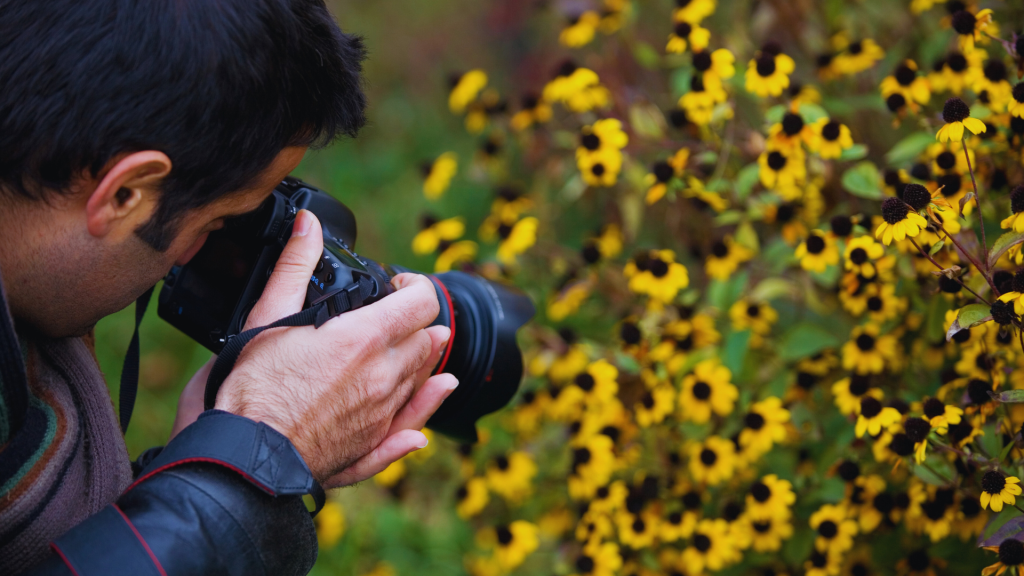Photography can be an enjoyable and fulfilling hobby, especially when exploring creative projects at home. Fun home photography projects can spark creativity and provide a refreshing way to improve skills without needing to venture outdoors. With a little imagination, anyone can turn their living space into a vibrant studio or a canvas for artistic expression.
Capturing everyday life through the lens can reveal unseen beauty and unique perspectives. From experimenting with still-life compositions using household items to conducting portrait sessions with family members or pets, there are endless opportunities for creators at any level. Each project can enhance technical skills while fostering a deeper appreciation for the art of photography.
Engaging in these projects can also serve as a therapeutic outlet, offering an opportunity for relaxation and mindfulness. Whether it’s through using natural light, playing with shadows, or exploring different angles, every click of the shutter can lead to unexpected discoveries and moments of joy.
Essentials of Home Photography
Home photography can be both enjoyable and rewarding. Key elements include understanding camera angles and how light interacts with patterns to enhance images. These aspects significantly influence the quality and creativity of photographs taken within a home environment.
Understanding Camera Angles
Camera angles can dramatically affect the composition of a photograph. Experimenting with different perspectives can reveal unique facets of a subject. Here are some common angles to consider:
- Eye Level: This is a standard angle, creating a natural perspective.
- High Angle: Shooting from above can diminish the subject’s presence, giving a different narrative.
- Low Angle: Capturing from below can make subjects appear more imposing.
By shifting angles, one can add depth and interest to home photographs. Trying various heights and tilts enhances creativity and showcases details that might otherwise go unnoticed.
The Role of Light and Patterns
Light is a critical element in photography, influencing mood and clarity. Natural light, such as that from windows, casts interesting shadows and highlights. The direction and quality of this light should be observed.
Patterns add another layer of intrigue. Repeating shapes and textures can create visually compelling compositions. For instance:
- Textiles: Fabrics can introduce color and texture.
- Furniture Layout: Arranging furniture to create leading lines can guide the viewer’s eye.
Using light to accentuate patterns enhances photographs, making them more dynamic and engaging. Observing how they interact allows for creative and striking results in home photography.
Creative Photography Projects
Engaging in photography projects can inspire creativity and strengthen connections with loved ones. Various activities cater to individual interests and group dynamics, offering opportunities for exploration and fun.
Solo Photographic Endeavors
Solo photography projects encourage personal expression and skill development. One idea is a 365-day photo challenge, where an individual captures one photo daily, documenting their year. This project can focus on themes such as self-portraits, nature, or everyday moments.
Another option is to explore macro photography. This involves using a camera to capture close-up images of small subjects, revealing intricate details often overlooked. Common subjects include flowers, insects, and textured surfaces.
Creating a photo book featuring a specific theme or personal journey helps organize one’s work. Individuals can curate their favorite images and include captions to share stories behind each shot. These endeavors promote self-reflection and artistic growth.
Fun Family Photography Activities
Family-oriented photography projects can create lasting memories and strengthen bonds. A classic idea is a family portrait day, where everyone prepares a unique outfit, and a designated family member takes candid shots. These pictures can be fun, reflecting each person’s personality.
Another engaging activity is a scavenger hunt, where family members receive a list of items or themes to photograph. Participants can explore their neighborhood or local park while documenting their findings. This fosters teamwork and creative thinking.
Themed photo days can also be enjoyable. Families might choose themes like “color,” “nature,” or “emotions,” and take photos reflecting these concepts. Each member can contribute by interpreting the theme in their unique style, resulting in a diverse and creative collection of images.
Photography Challenges with Friends
Participating in photography challenges with friends encourages collaborative fun. A popular choice is a themed challenge, where participants take photos around a central idea, like “shadow” or “reflection.” Sharing and comparing results can spur discussions on techniques and perspectives.
Another engaging activity is a photo walk. Friends can explore a selected area together, capturing interesting scenes and moments. This social approach allows them to discover new angles and viewpoints.
Timed challenges can also be stimulating. Friends set a timer and must capture specific subjects within a given timeframe. This activity promotes quick thinking and adaptability while ensuring laughter and friendly competition.
Developing Your Photographic Skills
Improving photographic skills involves both structured learning and creative exploration. Emphasizing hands-on experiences and intentional practice, individuals can enhance their abilities and confidence in photography.
Progressive Learning with Photography for Kids
Photography for kids offers a unique opportunity for progressive learning. Start with simple concepts, such as composition, lighting, and subject focus.
Common projects include:
- Nature walks: Children can capture images of plants, animals, and landscapes, teaching them to observe details.
- Family portraits: Engaging with family members allows kids to experiment with angles and expressions.
- Storytelling: Encourage kids to create a photo series that tells a story, which fosters creativity and vision.
Using digital cameras or smartphones helps kids understand technology while practicing their skills. Encourage regular photo-sharing sessions, where kids can discuss their work and receive constructive feedback.
Elevating Your Photographic Eye
To elevate a photographer’s eye, intentional practice and critique are essential. First, learning to recognize and utilize the elements of photography is vital.
Key components include:
- Rule of thirds: Aligning subjects along gridlines creates dynamic compositions.
- Leading lines: Using natural lines guides viewers’ eyes into the image.
- Framing: Finding natural frames within scenes emphasizes the subject.
Regularly review past work. Analyzing successful and less successful images helps identify strengths and areas for improvement. Joining local photography clubs can provide constructive interactions and inspiration. Ultimately, combining knowledge with creative practice leads to significant skill development.

